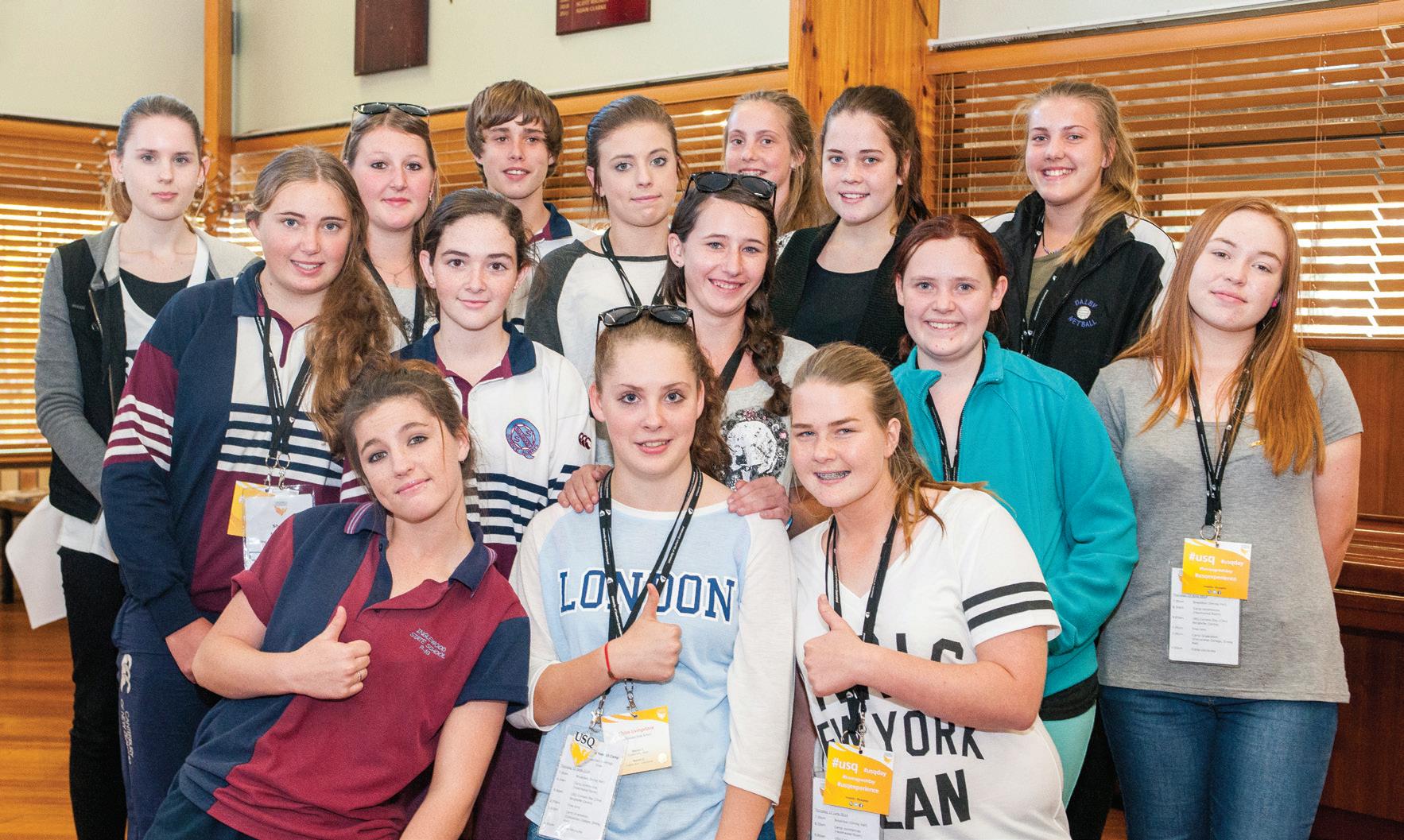
4 minute read
University of Southern Queensland
PRE-ACCESS ACCESS PARTICIPATION ATTAINMENT/TRANSITION
MAKING CAREER CHOICES
Advertisement
DESCRIPTION
The University of Southern Queensland (USQ)’s Making Career Choices program works collaboratively with individuals, schools and communities across the southern and western regions of Queensland.
Using career and community development frameworks of practice, this outreach service delivers a range of tailored supports to secondary school and TAFE students, teachers, parents, community organisations and their clients in order to build career decision-making skills which may inform future study choices, develop or enhance awareness and understanding of pathways into higher education and, for some regional and remote students, provide a unique university experience through participation in its annual Beyond Year 10 camps.
Partners: • Marketing & Student Attraction USQ • 25 partner schools • 20 partner community organisations.
OBJECTIVES
Making Career Choices’s primary goal is to contribute to widening regional participation in higher education through the provision of career outreach services. Focusing upon building individual, school and community capacity, the project seeks to enable secondary and TAFE students, and others from low SES communities, to make informed decisions about career possibilities.
““For some regional and remote students, Making Career Choices provides a unique university experience through participation in its annual Beyond Year 10 camps. – Making Career Choices coordinator
ACTIVITIES AND PROGRESS
Making Career Choices is the current iteration of USQ’s HEPPP funded career outreach initiative which began in 2013 with the Choices and Opening Doors programs. It is increasingly viewed as an important component of USQ’s suite of career development services, serving as a conduit through which to strengthen links between USQ and the communities it serves from Brisbane to Charleville and beyond.
The program provides tailored services to develop career decision-making skills, and increasing participants’ knowledge concerning pathways to higher education through workshops and individual career counselling opportunities. Students from regional and remote communities also gain exposure to university life through subsidised career-focused residential camps.
The scope of career development services has recently been further expanded to include individual scholarships to enhance the opportunities for low SES students otherwise unable to gain industry experience as a consequence of their financial circumstances. This has proved highly successful, as has the
ongoing expansion of industry linking and partnership activities, to deliver a continuum of career services from aspiration to graduate employment. Program practices have been refined over time to ensure optimal collaboration with, and leveraging from, other internal and external stakeholder programs. In this way resources are maximised, enabling services which better meet the diverse needs of unique target cohorts across a broad geographic footprint, to the highest quality standards. ““Making Career Choices’s primary goal is to contribute to widening regional participation in higher education through the provision of career outreach services. ““The knowledge of pathways to higher education gained by thousands of project participants will have a sustained impact.
– Making Career Choices coordinator SUSTAINABLE IMPACTS
Like many aspiration and awareness raising programs, the impact for some Making Career Choices project participants is distal. It may be several years before a participant from a non-English speaking background has developed the language competency necessary to pursue their higher education dream.
OUTCOMES
Since 2014, USQ’s career development outreach activities have delivered 357 career development workshops, seminars, expos and campus experiences, and 363 individual career counselling sessions, with a total of 10,572 incidents of participation (to 31 May 2017).
In 2016, Making Career Choices successfully demonstrated it had reached its objectives of increasing aspirations and knowledge ofpathways to higher education through the combination of career and community development with examples of impact. – Making Career Choices coordinator
100%
80%
60%
40%
20% A Beyond Year 10 participant from remote Queensland may wrestle with the barriers of distance, technology, economic capacity and social apprehension before enrolling several years later in higher education which may take them far from home. Yet, we know this project has already had a lasting effect for many. The positive relationships developed, the professional development Career and community development — examples of impact opportunities facilitated and the knowledge of pathways to higher education gained by thousands of project participants will have a A - Percentage of school aged C - Percentage of participants sustained impact reaching beyond the participants believing that as a result of Making who engaged in a workshop/ 1-on-1 career counselling boundaries of current HEPPP funding. Career Choices, they could now go to university. intervention that felt they were more likely to go to university. In recognising its value and benefit, B - Percentage of individuals D - Percentage of industry USQ has now cemented its future connected to a community organisation reporting an scholarship recipients strongly agreed their commitment to Making Career Choices A B C D increased knowledge of pathways to study. employability skills had been developed. through elevation to program status.










